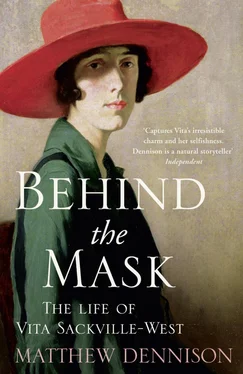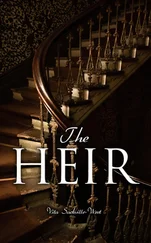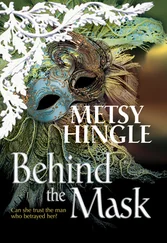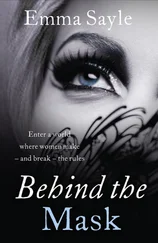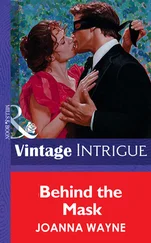Victoria’s past was romantic and picaresque. She was illegitimate, Catholic, the daughter of a small-town Spanish dancer Josefa Durán, known as Pepita, ‘the Star of Andalusia’. Pepita had become the mistress of an English nobleman. She bore him seven children, including Victoria. In a bid for respectability, she reinvented herself as Countess West and enlisted kings and princes as godparents to her illegitimate children. At her lover’s request, she set up home on the French coast southwest of Bordeaux, away from the eyes of the world.
Like Sir John, Victoria had lived part of her life in Paris. Until her absent father reappeared to rescue her, she had been educated for a governess at the Convent of St Joseph on rue Monceau. In 1890 she became chatelaine of Knole in Kent. She described it with simple pride – and truthfully – as ‘bigger than Hampton Court’. The vast house was the ancestral home of her husband, Lionel Sackville-West. Victoria learned swiftly that the income which supported it was less splendid. That Victoria’s husband was also her first cousin was a curious twist worthy of Victorian popular fiction: the English nobleman, Pepita’s lover, was the 2nd Baron Sackville, not only Victoria’s father but her husband’s uncle. Pepita died in 1871, her lover, Lord Sackville, in 1908. In the absence of legitimate offspring the latter’s title passed to his nephew.
After ‘ten perfect years of the most complete happiness and passionate love’, Lionel and Victoria’s marriage had turned sour. 6In the summer of 1913, the couple had a single child, their daughter Vita, who had lately celebrated her twenty-first birthday. Given her sex, the Sackville title would again descend collaterally. Meanwhile, out of love with his wife, Lionel took a series of mistresses: Lady Camden, Lady Constance Hatch, called Connie, an opera singer called Olive Rubens. Like miscreants on a saucy seaside postcard, Lionel and Lady Connie played a lot of golf.
Sir John Murray Scott had been a giant of a man. Measuring more than five feet around the waist and tall too, he weighed in excess of twenty-five stone. He died of a heart attack. The fortune he left behind him derived neither from his family nor his own entrepreneurialism. Instead, in 1897, he had inherited £1 million from his employer, a former shop girl who had caught the eye of Sir Richard Wallace, first as his mistress and afterwards his wife. Wallace was the illegitimate son of the 4th Marquess of Hertford. Lord Hertford left him estates in Ireland, a Parisian apartment of legendary magnificence at 2 rue Laffitte and the chateau de Bagatelle, a charming neoclassical maison de plaisance built by Louis XVI’s brother, the comte d’Artois, and surrounded by sixty acres of the Bois de Boulogne to the west of Paris. To this splendid inheritance Wallace had added a lease on Hertford House in London, today home of The Wallace Collection, which is named after him. All these glittering prizes Lady Wallace willed to John Murray Scott. For three decades he had served the Wallaces as their devoted secretary. No conditions restricted the bequest. He was free to act as he wished, which is exactly what he did.
What Sir John wished was to help his ‘ chère petite amie ’. In a letter delivered to Victoria after his death, he had written, ‘It will be found that I have left you in my Will … a sum of money which I hope will make you comfortable for life and cause all anxiety as to your future ways and means to cease.’ 7Gratitude inspired his generosity: ‘You did everything to make my broken life, and my last words to you are: “I am very grateful.”’ 8Victoria had ensured that Sir John, or ‘Seery’ as the Sackvilles called him, was fully aware of the contrast between his own wealth and the relatively modest income generated by the Sackville estates (a sum of £13,000 a year, recently estimated at ‘perhaps a third of what was needed to support an establishment such as Knole’ 9). As an added sweetener to his £500,000 bequest, he left Victoria a diamond necklace that had once belonged to Queen Catherine Parr, a pocket book of Marie Antoinette’s and, from Connaught Place, a bust by eighteenth-century French sculptor Houdon and a chandelier. Together, chandelier and sculpture were worth a further £50,000: Sir John intended them for Knole. For good measure, he left a second diamond necklace to Victoria’s daughter Vita and a valuable pearl necklace, which became his posthumous twenty-first birthday present to her.
A fly on the wall in Connaught Place would have known the way the wind was blowing long before writs were issued. Even during Sir John’s lifetime, his siblings had referred to Lionel and Victoria as ‘the Locusts’. Sir John had made Victoria a number of ‘gifts’ in the dozen years of their friendship. Beginning with a modest single payment of £42 8s 6d, these ultimately amounted to a figure close to £84,000. In several instances the purpose of these gifts was understood to be expenses relating to Knole or the settlement of Sackville debts and mortgages (a handout of £38,600, for example, begun as a loan for this purpose, was subsequently written off). The real recipients were not Victoria but Lionel and Knole. In addition, at a cost of £17,000, Sir John had provided Victoria with a handsome London townhouse at 34 Hill Street in Mayfair. With little regard for the feelings of his unmarried sisters, who nominally kept house for him, Victoria chose to divide much of her time between Hill Street and Connaught Place. There she rearranged the furniture, instructed the servants, commandeered Sir John’s carriage and hosted dinner parties from which she excluded his sisters Miss Alicia and Miss Mary. She dismissed them both as irredeemably drab. Sir John did not object. To rub salt into the wound, he presented Victoria with a handsome and valuable red lacquer cabinet, which he had bought for his sisters’ boudoir. By the summer of 1913, in the eyes of her opponents, Victoria’s offences were manifold.
The case that began on 26 June concerned Victoria’s exercise of ‘undue influence’ over Sir John’s will. As The New York Times explained to American readers, F. E. Smith, counsel for the prosecution, ‘in concluding his nine hours’ [opening] speech, said the question was whether the testator at a vital and critical moment was in a position to give free play to his own wishes or whether he was so under the influence of Lady Sackville that the decisions he took were not his, but hers’. 10Sir John’s siblings were clear on the matter. So, too, was Victoria. Dressed with colourful and costly panache, she gave a bravura performance in the witness box. In one of several early, unpublished novels, Vita reimagined her mother’s triumph: ‘Her evidence was miraculous in its elusiveness; she held the court’s attention, charmed the judge, took the jury into her confidence, routed the opposing counsel, wept at some moments, looked beautiful and distressed …’ 11The jury needed only twelve minutes to reach their judgement. Victoria emerged victorious and just about exonerated. The judge, Sir Samuel Evans, acclaimed her as a woman of ‘very high mettle indeed’; afterwards Victoria made a friend of him. The Pall Mall Gazette reached a less partial assessment: ‘Sir John was ready to give, and Lady Sackville scrupled not to receive.’ In acknowledgement of her gratitude, Victoria afterwards invited all twelve jurymen to her daughter’s wedding.
As long ago as 17 June 1904, Victoria had confided to her diary ‘I hate gossiping’. 12Later she wrote, ‘People may do what they like but it ought to be either sacred or absolutely private. It is nobody’s business to know our private life. The less said about it, the better …’ 13It was fear of exposure which added a frisson to Edwardian misbehaviour. ‘The code was rigid,’ Vita later wrote in a novel about the period. ‘Within the closed circle of their own set, anybody might do as they pleased, but no scandal must leak out to the uninitiated. Appearances must be respected, though morals might be neglected.’ 14
Читать дальше
